|
The Marstons: A California Story - Part 1
By Robin Lakin
July/August 2022
With this issue of the eNews, SOHO introduces a new series, The Marstons: A California Story, on the rich and vast history of the George White Marston and Anna Lee Gunn Marston family. We’ll follow the Gunn and Marston clans to California, with a focus on the adventures that led both families to San Diego. We’ll also portray their businesses, philanthropic and civic contributions, preservation of local historic sites, and their sensitive approach to the development of what would become known as “America’s Finest City,” a compliment that in large part is due to the Marston family.
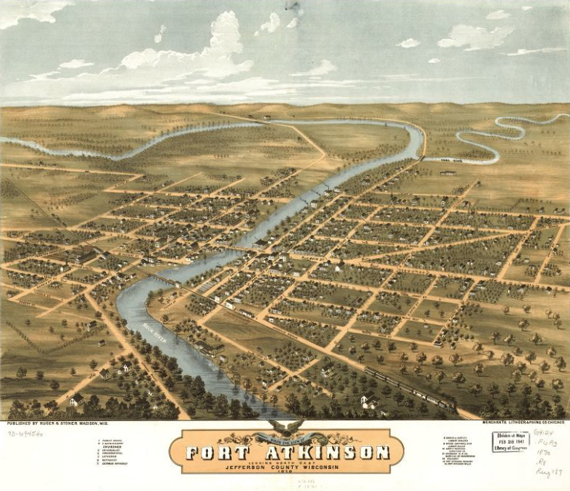 1870 bird's eye view of Fort Atkinson, Wisconsin. George Phillip and Harriett Marstons’ Italianate home is shown at the center of Merchants Avenue, between 3rd and 4th Streets. Courtesy Library of Congress
George Phillip Marston - Farm to Tableware in Wisconsin
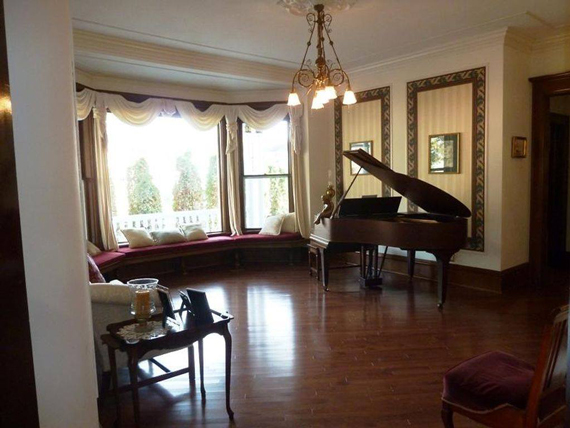 George Phillip Marston House music room, Fort Atkinson, Wisconsin. Courtesy Library of Congress |
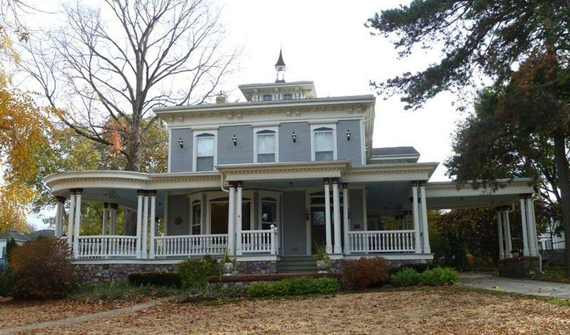 George Phillip and Harriet Marston House (1864), boyhood home of George W. Marston, Fort Atkinson, Wisconsin. |
When George White Marston was born in a Jefferson County, Wisconsin cabin to George Phillip and Harriett Marston, it’s not likely anyone imagined the babe would become one of the most successful and notable figures in San Diego, his business acumen developed mainly under his father’s influence.
Perhaps it was a sense of adventure or lack of opportunities at home which led the father, George Phillip Marston, raised in Newburyport, Massachusetts, to carve a hard-scrabble living out of the Wisconsin wilderness. In 1837, assisted by his father, Judge Stephen Marston, George purchased 640 acres of timberland in Wisconsin to grow wheat. He eventually did well enough to marry his cousin, Harriett, on October 10, 1849, and brought her to their new home, an isolated cabin in the middle of nowhere.
Just over a year after the couple married, George White Marston was born on October 22, 1850. By this time, George Phillip realized farming was not a good fit; by 1851, his leg had been significantly injured by a felled tree, so he leased his farm and established a mercantile business in Fort Atkinson.
His cash and carry business, variously called Marston & Co. or George P. Marston & Co., was housed in a two-story building on Main Street (torn down and rebuilt for Marston in 1867) and likely constructed of the local cream bricks, on the south side of the Rock River, which split Main Street in two.
|
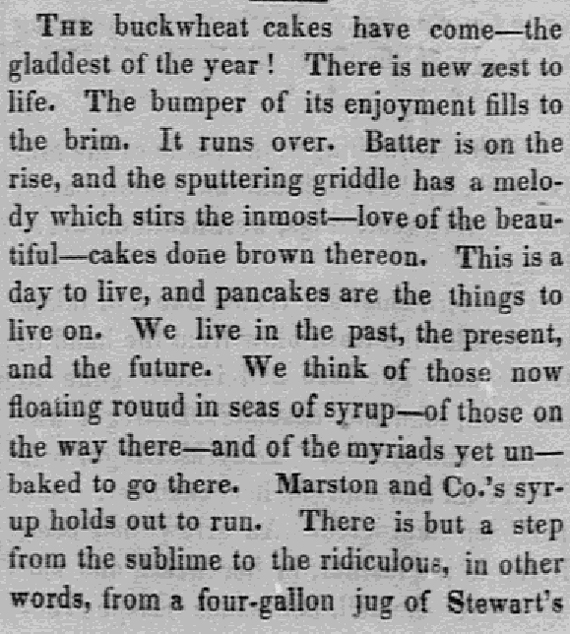 Marston & Co. syrup advertisement; Wisconsin Chief, December 10, 1856 |
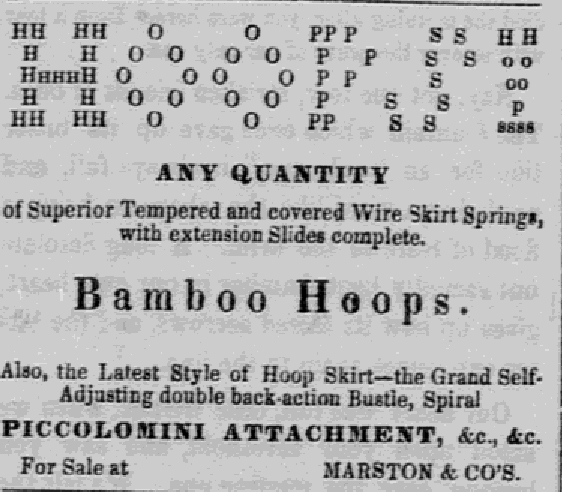 Hoopsy! A whimsical Marston & Co. hoop skirt advertisement; Wisconsin Chief, July 13, 1859 |
In the late 1850s, Marston leased the rooms on the second story of his building to an attorney, an “eclectic physician,” a tailor, and an insurance broker. Additional investments included a lumber yard and pasture land rentals for cow herds. Most significant was the development of Marstons Addition in 1855, a 40-acre parcel subsidized by the sale of part of his farmland, and subdivided into lots; he sold 30 lots that year. By 1864 he was able to build a grand, two-story Italianate home featuring a cupola at 323 Merchants Avenue, still extant and a part of the Fort Atkinson Historical Society.
Marston’s store must have had a sizable amount of floor space, based upon the variety of goods that he sold. Making semi-annual buying trips to Boston, he stocked his store with dress goods and fabric of all sorts, ready-made clothing for boys and men, shawls “fit for a duchess,” hosiery, hats, shoes, wool roving, wire and bamboo hoop skirts, bustles, wallpaper, paint, hardware, plows, lathes, Adamantine candles (better than tallow), lamp oil, groceries, tea, mocha and java coffee, muscovado (brown) sugar, syrup, Chinese sugarcane seeds, tin-canned food products, clover seed, crockery, dishes and cutlery.
A prolific advertiser, Marston built his business using whimsical printing styles and articles boasting the benefits of his products. These creative efforts clearly influenced the advertising and merchandizing methods his son, George White Marston, would employ at the Marston Company, his own successful mercantile business in San Diego. How proud George Phillip must have been when his son developed San Diego’s first luxury department store, under the family name.
Read the rest of the ongoing The Marstons: A California Story History Series.
|
2025
2024
2023
2022
2021
2020
2019
2018
2017
2016
2015
|








